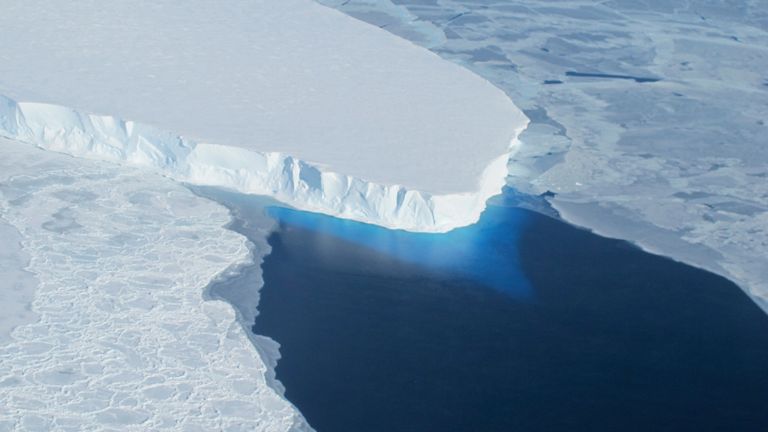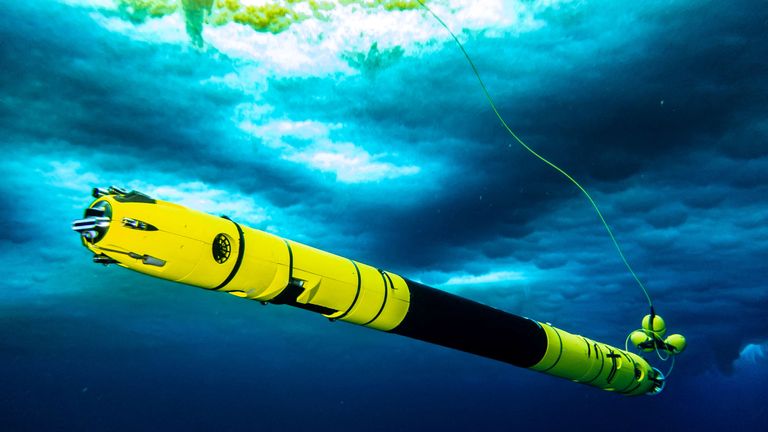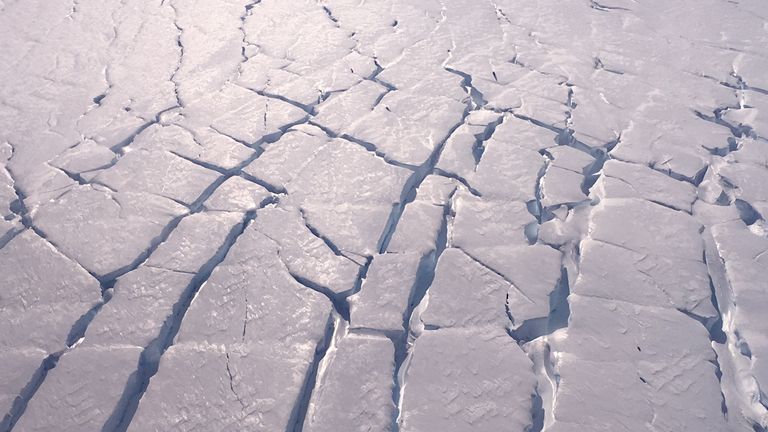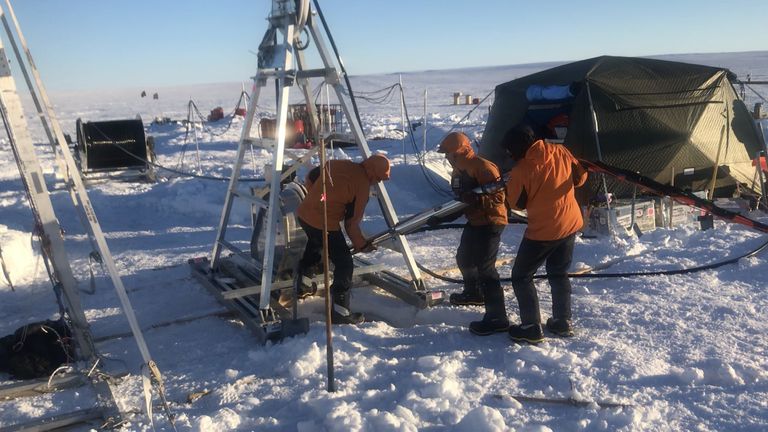Antarctica’s vast Thwaites glacier, which could push up global sea levels by half a metre because of its melting ice, is “in trouble”, according to scientists.
For the first time, experts assessed the glacier’s critical grounding line – where ice first protrudes into the sea – thanks to a 13ft torpedo-shaped robot lowered through half a kilometre of ice.
They detected a critical point in Thwaites’ chaotic breakup, “where it’s melting so quickly there, there’s just material streaming out of the glacier,” said robot creator and polar scientist Britney Schmidt of Cornell University, New York.
But there was also some good news, as the underwater area the scientists investigated was melting much slower than they expected.
Using the “Icefin” robot, lowered down a 587m deep hole blasted by a hot water jet, they detected crevasses fracturing the ice, which are even more damaging than melting.
“That’s how the glacier is falling apart. It’s not thinning and going away. It shatters,” said Ms Schmidt, lead author of one of two studies published yesterday in the peer-reviewed journal Nature.
That fracturing “potentially accelerates the overall demise of that ice shelf,” said Paul Cutler, the Thwaites program director for the National Science Foundation who returned from the ice last week.
“It’s eventual mode of failure may be through falling apart.”
The Britain-sized glacier has been nicknamed the “Doomsday Glacier” because its melt could eventually drive up sea levels by 65cm, though that’s expected to take hundreds of years.
Read more climate change news
Climate crisis may have triggered collapse of ancient empire
Warning of deep sea mining threat to blue whales
Thwaites is being melted primarily from beneath, where warm water is eating away at the underside in a process called “basal melting,” explained Peter Davis, an oceanographer at British Antarctic Survey and a lead author of one of the studies.
“Our results are unexpected, but the glacier is still in trouble,” Mr Davis said.
“If an ice shelf and a glacier is in balance, the ice coming off the continent will match the amount of ice being lost through melting and iceberg calving. What we have found is that despite small amounts of melting there is still rapid glacier retreat, so it seems that it doesn’t take a lot to push the glacier out of balance.”
The glacier retreating – whereby ice breaks off into the sea – is a more severe problem than the melt, Mr Davis said.
The more the glacier breaks up or retreats, the more ice floats in water, displacing water levels like an ice cube in a glass of water.
Worse still is the findings that come from the more stable, larger, eastern part of the glacier.
Researchers couldn’t safely land a plane and drill a hole in the ice in the main trunk, which is breaking up much faster.
“Thwaites is a rapidly changing system, much more rapidly changing than when we started this work five years ago and even since we were in the field three years ago,” said Oregon State University ice researcher Erin Pettit, who wasn’t part of either study.
“I am definitely expecting the rapid change to continue and accelerate over the next few years.”
Watch the Daily Climate Show at 3.30pm Monday to Friday, and The Climate Show with Tom Heap on Saturday and Sunday at 3.30pm and 7.30pm.
All on Sky News, on the Sky News website and app, on YouTube and Twitter.
The show investigates how global warming is changing our landscape and highlights solutions to the crisis.





















